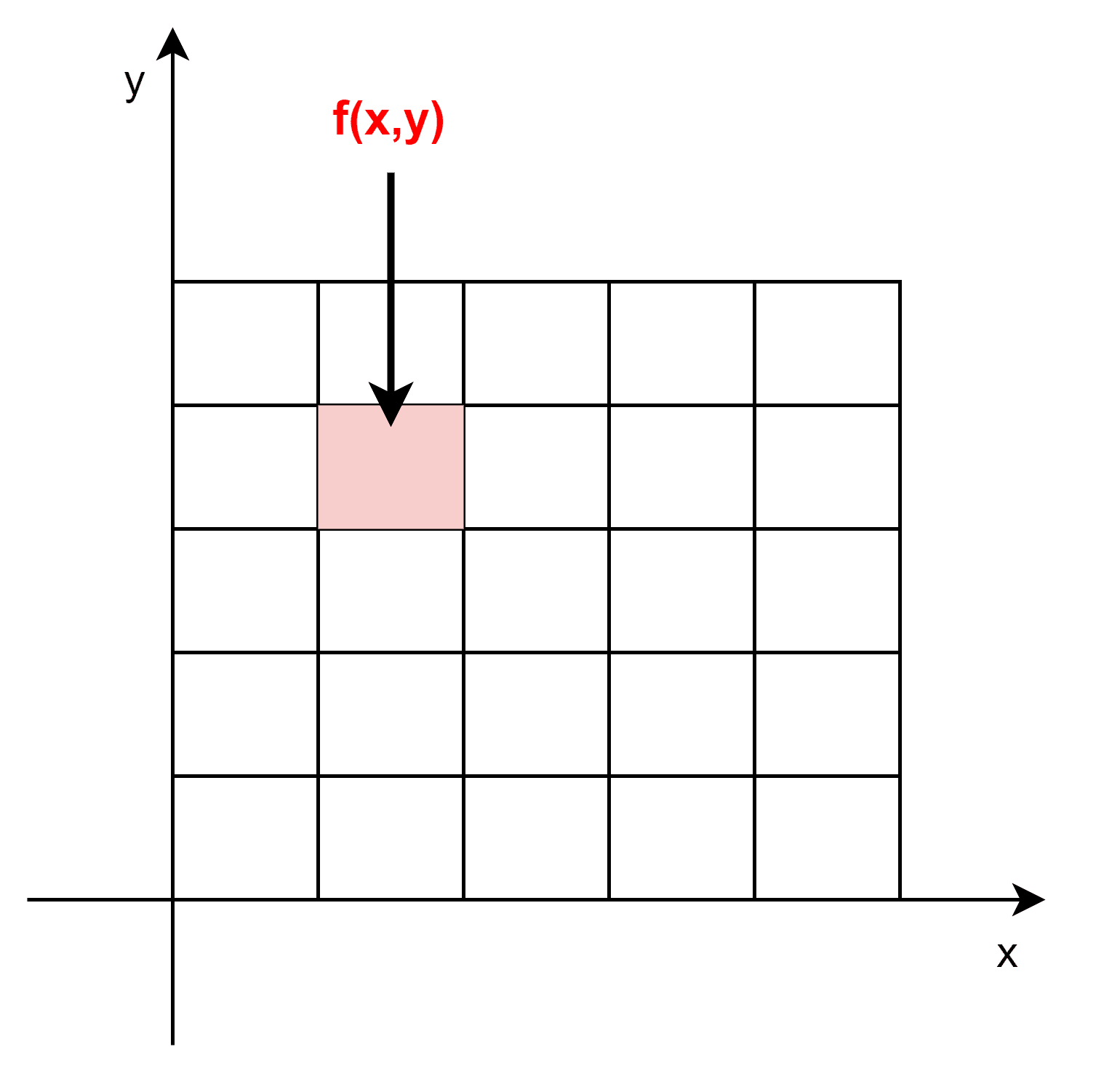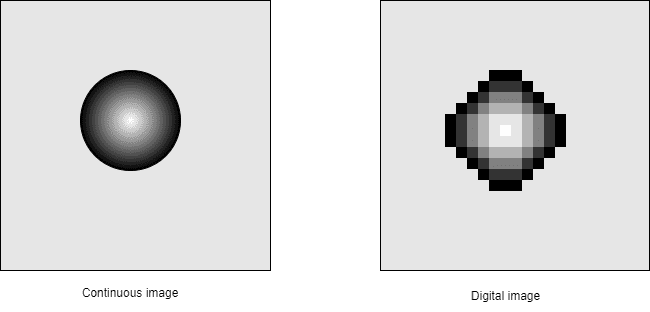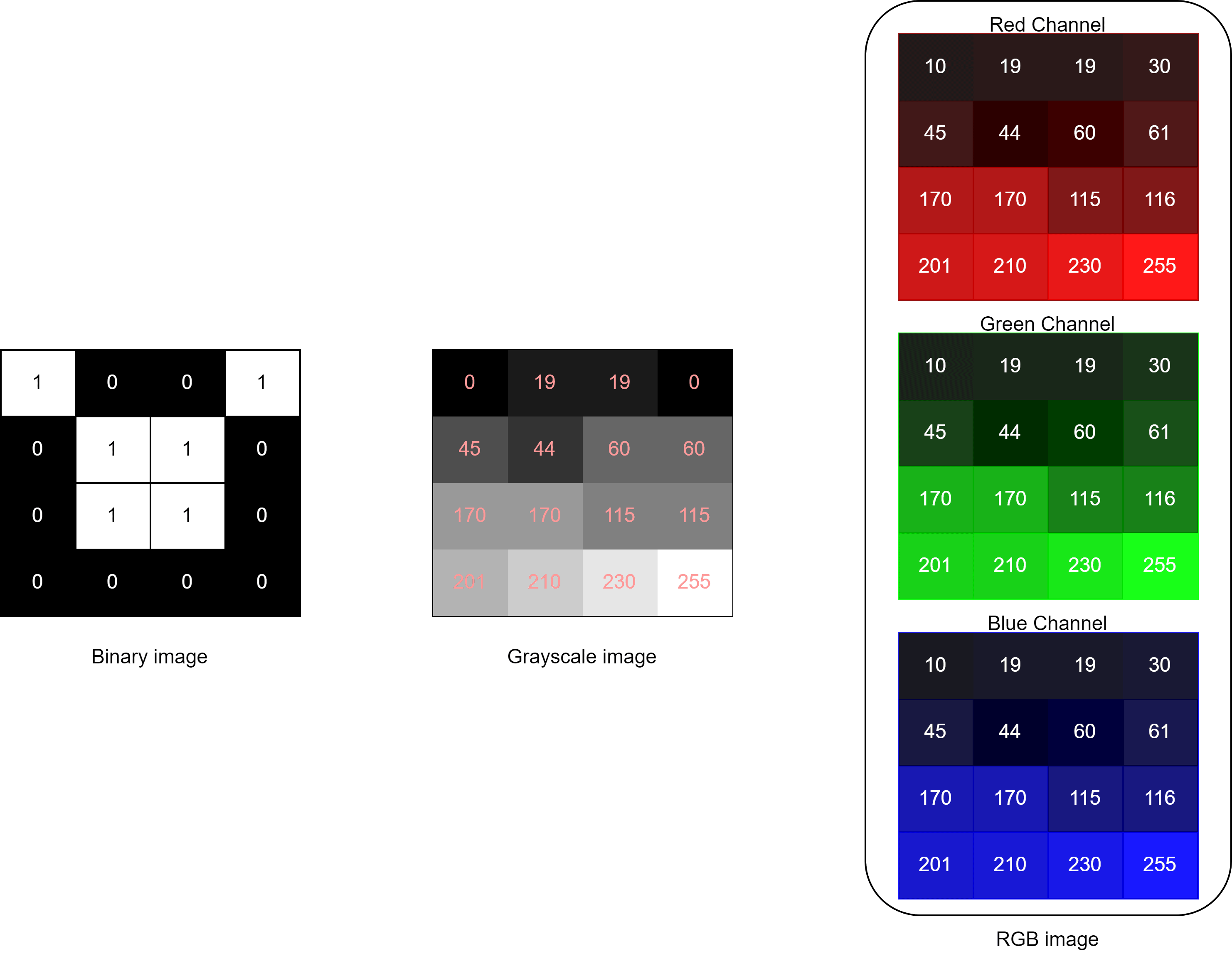Learn through the super-clean Baeldung Pro experience:
>> Membership and Baeldung Pro.
No ads, dark-mode and 6 months free of IntelliJ Idea Ultimate to start with.
Last updated: March 18, 2024
In this tutorial, we’ll discuss two basic procedures for processing digital images: sampling and quantization.
We can capture a picture using the sensors in imaging tools, such as a camera. The sensors produce an image in the form of an analog signal, which is then digitized to produce a digital image.
A digital image is a two-dimensional function where
and
indicate the position in an image. The
function holds a discrete value called the intensity value. Let’s see an example of the visual representation of spatial coordinates and amplitude of a digital image:

The digital image contains a collection of elements called pixel or picture elements, each having its intensity value. In order to enhance an image and use it for some applications, we apply various operations that are part of the image processing method.
Sampling and quantization operations are part of the image processing method that converts continuous voltage signals obtained from sensors into digital images.
A digital image consists of coordinates
and
. Additionally, it contains the function’s amplitude. Quantization refers to digitizing the amplitudes, while sampling refers to digitizing the coordinate values.
The sensors placed in the image acquisition device capture the projected continuous image. Later, this digitizes to form a digital image suitable for real-time applications. For example, let’s see the difference between a continuous and digital image:

Digital images are basically of three types: monochrome or binary images, grayscale images, and color images.
The pixel value of a binary image at a specific location usually holds the value 0 for black or 1 for white. Grayscale images have intensity values ranging from 0 to 255, where 0 is black, gradually fading to 255, which is white. Additionally, color images like RGB images contain three channels red, green, and blue channels. Each channel in an RGB image has intensity values ranging from 0-255.
Let’s see how each image looks with the help of 4×4 samples from binary, grayscale, and RGB image:

Sampling and quantization result in a matrix of rows and columns consisting of real numbers. Further, let’s say a photo is 250 x 350. Here, the width is 250, and the image height is 350. This implies that the digital image has 250 columns and 350 rows, respectively.
The main idea behind digitization is that storage and retrieval of digital images are faster as well as cheaper than analog images.
Digital images allow compression (size reduction) using a variety of methods to make them easier to transmit over various mediums.
We can segment a digital image by detecting discontinuities such as points, lines, and edges. This allows the picture to be used for applications where a part of the image needs to be removed or highlighted.
Furthermore, the area of design and prototyping is made easier with digital images. Hence, it makes the procedure less expensive.
Sampling and quantization allow images to be applied in medicine for accurate diagnosis. Visualizing human body parts with the help of X-rays, MRI, and scans, thereby making it easier for computer-aided diagnosis.
Furthermore, we can use sampling and quantization in remote sensing, which plays a major role in studying objects in space in a cheaper way.
Moreover, the digitization of images facilitated the existence of the computer vision field. Machine learning and deep learning algorithms are proven efficient with the help of digital images.
In this tutorial, we briefly discussed image processing as well as explored sampling and quantization concepts. In addition, we also highlighted some of the key advantages and popular applications of digital images.